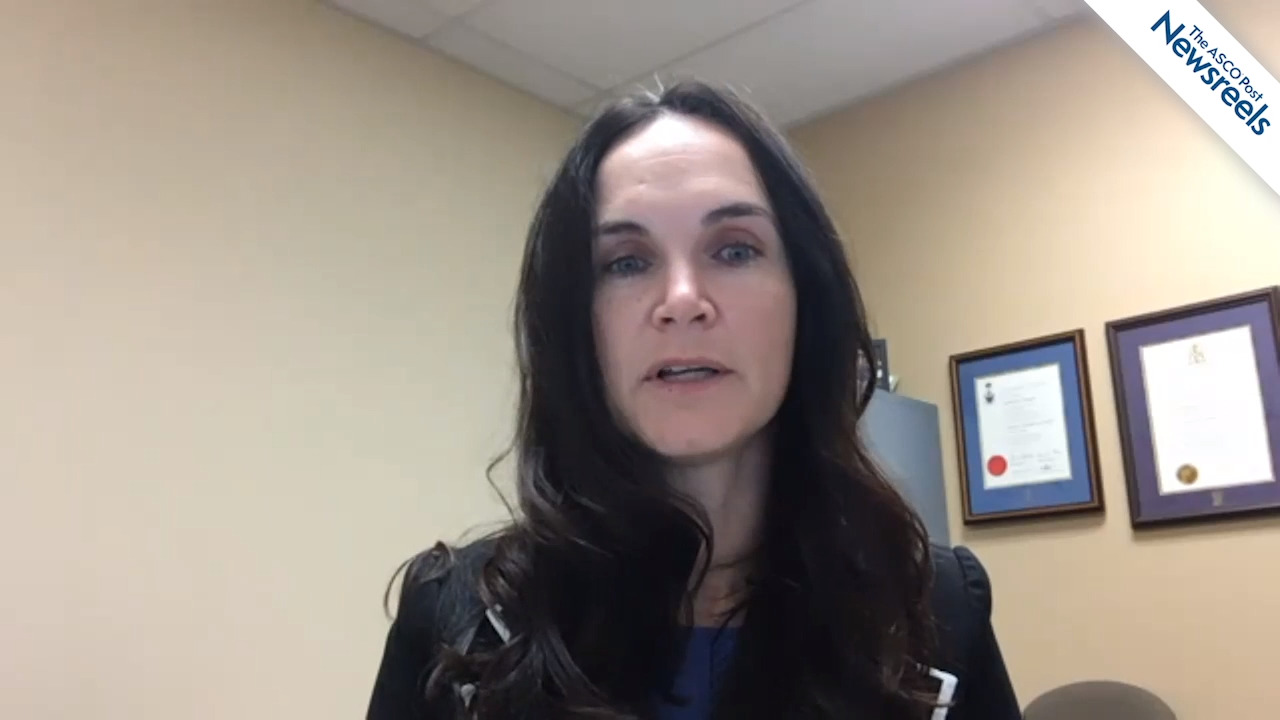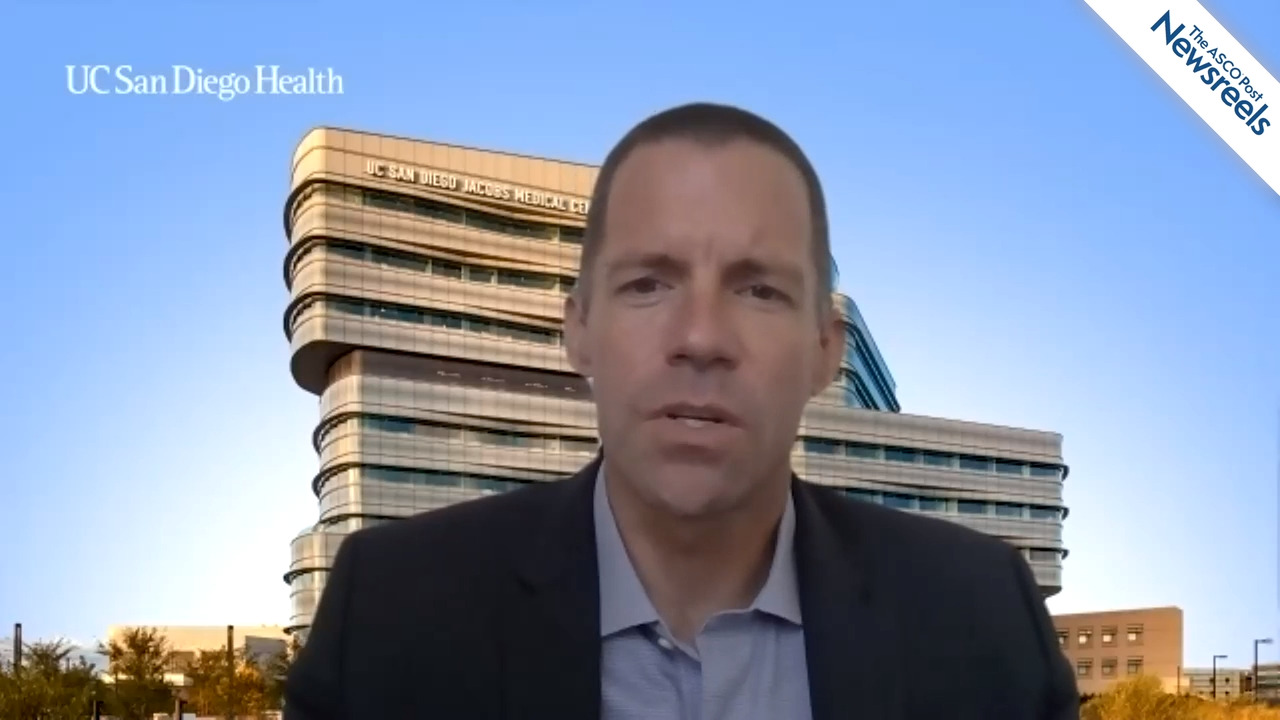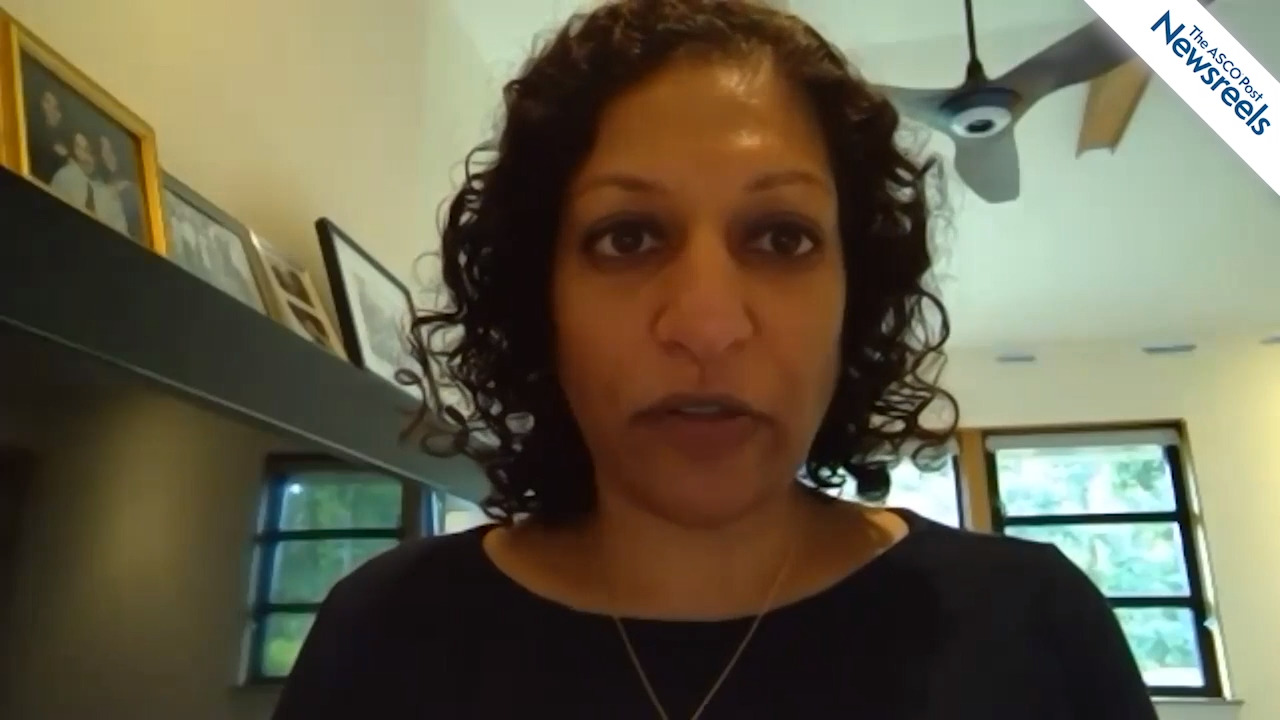Cardinale B. Smith, MD, PhD, on Telehealth Disparities During the COVID-19 Pandemic
2020 ASCO Quality Care Symposium
Cardinale B. Smith, MD, PhD, of the Icahn School of Medicine at Mount Sinai, discusses findings showing Black, Hispanic, and Asian patients with cancer used telehealth less often during the COVID-19 pandemic than White patients with cancer, a negative trend that will become more problematic as this method of care continues to increase through subsequent waves of coronavirus infection and plays a larger role in standard treatment (Abstract 87).
The ASCO Post Staff
Katherine Enright, MD, MPH, of Trillium Health Partners in Ontario, discusses a model of quality improvement, which potentially could be adapted across health systems to improve oral systemic cancer care (Abstract 184).
The ASCO Post Staff
James D. Murphy, MD, of the University of California, San Diego, discusses the possible reasons for a decline in long-term opioid use in patients with cancer, even as short-term use is rising, as well as the racial and socioeconomic disparities of opioid use in this population (Abstract 187).
The ASCO Post Staff
Cardinale B. Smith, MD, PhD, of the Icahn School of Medicine at Mount Sinai, discusses results of a pilot study suggesting dedicated lay staff members, who facilitated admissions and discharges for patients with cancer across care settings, could improve health-care utilization, quality, and the patient experience (Abstract 6).
The ASCO Post Staff
Veena Shankaran, MD, of the Seattle Cancer Care Alliance, discusses study findings from a national sample of patients with metastatic colorectal cancer who are on systemic therapy. A year into their treatment, nearly three out of four patients had major financial hardships despite access to health insurance coverage (Abstract 137).
The ASCO Post Staff
Marie A. Flannery, PhD, and Eva Culakova, PhD, both of the University of Rochester, discuss a geriatric assessment tool that helped reduce symptomatic toxicities, as measured by Patient-Reported Outcomes Common Terminology Criteria for Adverse Events (Abstract 138).





